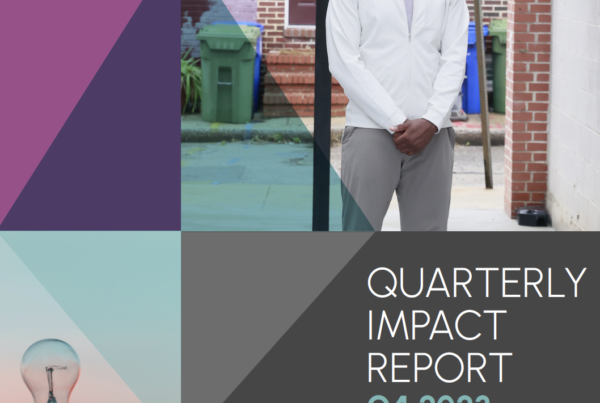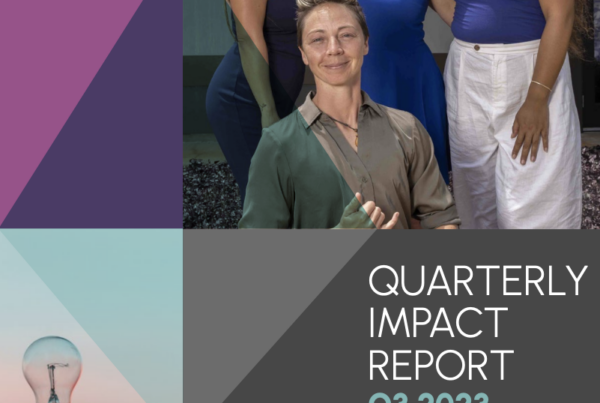Social investment, also known as socially responsible investing, social investing, and impact investing, allows investors to align their values with investment strategies that positively impact social issues while generating a financial return.
Social problems such as natural resource preservation, better education and healthcare, animal welfare, corporate responsibility, inequality, and climate change are attracting those that want to invest in effecting social change.
Table of Contents
In the past, the social investment market suffered from a lack of interest largely due to its association with lower financial returns.
Measuring the impact of social investment was also challenging without systematic reporting standards and the confusion around sub-optimal offerings that conveyed a false impression of creating real social progress (also known as greenwashing).
In recent years, social investing has increased in popularity as the scale of the funding needed to improve the world’s social issues has outpaced traditional sources of capital, mainly government aid and philanthropy. The growth of socially responsible investing is also being driven by Millennials, women, and an ever-increasing global economic inequality that promotes an increased interest in values-based investments.
Now we are experiencing an explosion of new products, tools, and strategies that are contributing to the disappearance of the stigma around social investment while helping to establish it as the future of profitable investing with a conscience.
Within the social investing space there are many specialized approaches to achieving economic, social, and environmental goals. Some of these include impact investing, socially responsible investing (SRI), social enterprise investing, CDFI investing, and much more.
Impact investing
Impact investing seeks to generate positive social and environmental impacts and a financial return that is intentionally measured. Typically, investors require that projects or companies report evidence that the intended impact has been generated. This investment space is focused on efforts to build markets in renewable energy, sustainable agriculture, cleantech, and other important sectors that demonstrate a direct impact on society. These investments are run by a range of specialized asset managers as well as mainstream financial institutions.
Socially responsible investing (SRI)
SRI investing is an umbrella term for any investment strategy that seeks to generate a financial return while using environmental, social, and corporate governance (ESG) criteria to fund sustainable and ethical businesses. SRI is also referred to as sustainable, responsible and impact investing by US SIF. Usually, SRI investing rules out investments in companies that produce and sell harmful substances (such as tobacco) and those that take part in detrimental activities (such as environmental pollution and human rights abuses).

An example of the kind of activities that may be excluded through an exclusionary screen
SRI includes an ever-widening range of products and asset classes such as stocks, cash, fixed income, private equity, venture capital, and real estate. Investors can invest in individual companies or socially conscious exchange-traded funds (ETFs) and mutual funds.
Social enterprise investing
Social enterprise investing gives capital support to socially conscious nonprofit and for-profit businesses, for example in renewable energy, to generate returns that blend social benefit with financial revenue. It often involves short-term loans to early-stage businesses and individual entrepreneurs along with grants and other forms of philanthropic support. Like traditional businesses, social enterprises need to make money to sustain themselves but they measure success by more than just profits.
CDFI investing
CDFIs offer investors the chance to directly invest in the small businesses of “Main Street America.” CDFIs are lenders that provide business or development loans to women and minority business owners, small businesses, affordable housing development projects, not-for-profit companies, and local governments.
Most often a CDFI investment is placed in a community development loan fund. Loan funds pool capital with other investors and spread risk across a diversified portfolio of community-centered loans from small business to affordable housing. CNote makes it easier for individuals and institutions to invest in loans issued by community development financial institutions (CDFIs).
For many investors, socially responsible investing is now a fundamental imperative along with the expectation of a competitive financial return. How an investor chooses to invest will depend on what type of investor they are, their goals and return expectations, and their acceptable level of risk exposure.
For example, social investing allows foundations to leverage their assets in ways beyond traditional grants and to support markets underserved by the private financial sector. They can accelerate change by expending capital to borrowers doing business in economically-distressed communities, encouraging growth, public services, and innovation.
As an individual investor, social investment can help increase portfolio stability with mutual funds that may have lower volatility than comparable non-impact based funds. And financial advisors can add impact investment strategies to the offerings available to their clients, guiding them with investing in specific mutual funds, exchange-traded funds (ETFs), or private funds that invest in companies based on social, environmental, or governance criteria.
Those who take part in social investing want to know that they’re making a difference. But like the private investment market, social investment is refining its practices and standards as it grows. Some of the issues that highlight the current benefits and challenges of social investment are the rate of return, how easy it is to invest, and consistent measurement standards.
Rate of return
Social investors generally aim to preserve capital across their portfolio in order to move it through different investments. Based on the level of risk adopted, a social investment return will be below, above, or on par with various market benchmarks, such as the Impact Investing Benchmark.
But many social investors are driven by the societal impact of the social enterprises they support and not only by financial returns. Therefore some investors may tolerate a below-market rate of return. For investors who want market-rate returns or better, there are ways to invest that ensure the social investment makes sense for their goals.
Ease of investing
Some organizations have their own retail platforms where individuals can invest directly, like CNote, while many others are only available through brokers or direct offerings. And with all the new products available it can sometimes be difficult for individual investors to understand what solution makes the most sense for their needs.
This is where a qualified advisor can step in to help with an individual’s choice of investment products, whether that’s mutual funds, ETFs, fixed income, or other offerings. And with the rising interest in social investing, it’s important to investigate funds to make sure that they’re credible and truly committed to increasing social impact.
Measuring impact
Measuring an investment’s social impact is important and can help organizations make better decisions and communicate their value. But there are many specific methodologies that are used to measure different objectives in different parts of the investment cycle.
In the years ahead, as socially responsible investing becomes the mainstream investing standard, the continued development of impact measurement frameworks and consistent reporting standards, such as the Global Impact Investing Network’s (GIIN) Impact Reporting and Investing Standards (IRIS) metrics will help to unify how the effectiveness of a social investment approach is measured.
According to the most recent US SIF Foundation Report on U.S. Sustainable, Responsible, and Impact Investing Trends, sustainable, responsible, and impact (SRI) investing assets now account for one in four dollars (26%) in total assets under professional management in the United States.
In the first half of 2019, an estimated $8 billion in net flows have gone into sustainable funds, massively outranking the $5.5 billion for the entire year of 2018. Institutional and individual investors alike are realizing that the quickly maturing social investment market is an essential way to finance social ventures that support global and local economic prosperity for everyone while making a solid return on their investment.
Besides rational arguments of benefit and return, more investors are also adopting the moral justification that investing sustainably is ethically the right thing to do. With a growing emphasis on the value of not only shareholders but also stakeholders in shaping the distribution and utilization of wealth and resources, barriers between public and private capital are breaking down to promote collaboration and engage new investors.
Conclusion
The interest in social investment shows no signs of slowing down. In fact, it’s becoming more and more accepted as the way forward towards achieving progress on the social issues that impact us all, such as climate change, energy efficiency, economic inclusion, healthcare, and education while giving investors the chance to achieve profitable returns. As digital transformation continues to change the investing landscape, the current divisions between investing and philanthropy will continue to merge as complementary strategies, increasing the power of social investment to create social good.













